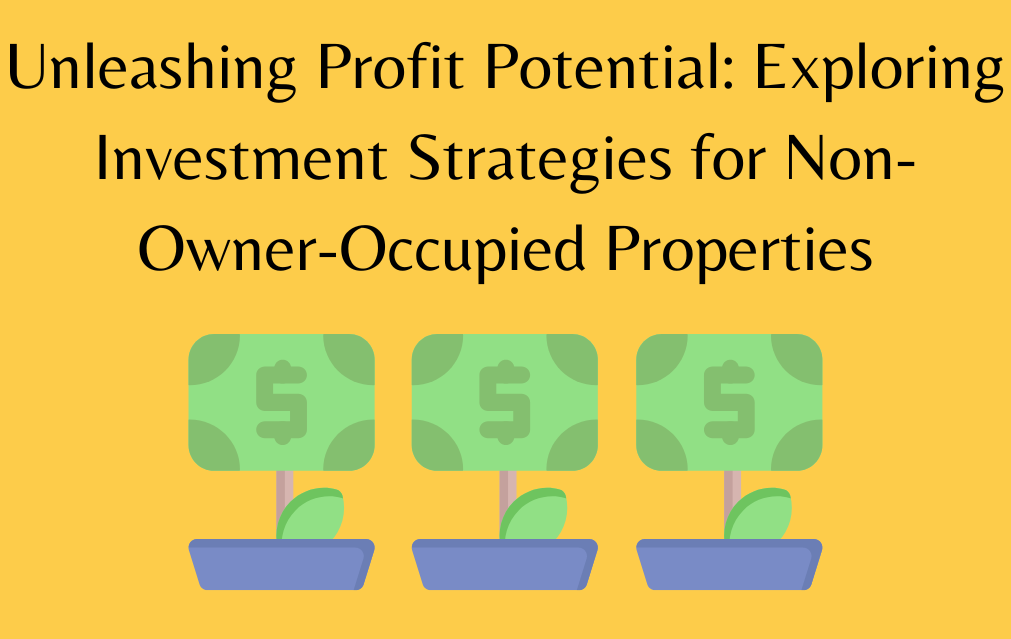Investing in non-owner-occupied properties offers a world of opportunities for building wealth and generating passive income. However, to truly maximize returns, savvy investors employ a range of investment strategies tailored to their goals, risk tolerance, and market conditions. In this article, we embark on a journey through diverse investment strategies that can help investors unlock the full profit potential of non-owner-occupied properties.
1. Buy and Hold Strategy: The cornerstone of real estate investing, this strategy involves purchasing properties for rental income and long-term appreciation. Investors benefit from steady rental cash flow and potential equity growth over time.
2. House Hacking: Investors can live in one unit of a multi-unit property while renting out the remaining units. This strategy allows for reduced living expenses and the opportunity to generate income from the property.
3. Flipping Properties: Flipping involves buying distressed properties, renovating them, and selling them quickly for a profit. While more active and riskier, successful flips can yield substantial returns.
4. Short-Term Rentals: Leveraging platforms like Airbnb, investors can capitalize on the growing demand for short-term rentals. This strategy often generates higher cash flow than traditional long-term rentals.
5. Value-Add Investments: By strategically renovating or improving a property, investors can increase its value and rental income potential. Value-add investments can be a lucrative approach in the right market.
6. BRRRR Strategy: Buy, Rehab, Rent, Refinance, Repeat. This strategy involves purchasing a property, rehabilitating it, renting it out, refinancing to recover the investment, and then repeating the process with the newly acquired funds.
7. Real Estate Investment Trusts (REITs): Investing in REITs allows you to buy shares in a company that owns and manages income-generating properties. REITs provide exposure to real estate without the direct ownership of properties.
8. Lease Options: This strategy involves leasing a property with an option to purchase it at a predetermined price in the future. Investors can generate rental income and potentially profit from future property appreciation.
9. Student Housing Investments: Investing in properties near universities can yield higher rental income due to the consistent demand for student housing. This strategy requires careful market analysis and property management.
10. Niche Markets: Exploring niche markets, such as vacation rentals, senior housing, or affordable housing, can provide unique investment opportunities that cater to specific demographics or trends.
As the real estate landscape evolves, so do the strategies investors employ to maximize returns from non-owner-occupied properties. Whether you’re drawn to the stability of long-term rentals, the excitement of house flipping, or the potential of short-term rentals, there’s a strategy that aligns with your investment goals. Remember that each strategy comes with its own set of risks and considerations, and the key to success lies in thorough research, due diligence, and a clear understanding of your own financial goals and risk tolerance. By tailoring your investment approach to match your strengths and aspirations, you can navigate the diverse world of real estate investing with confidence and achieve remarkable results.


